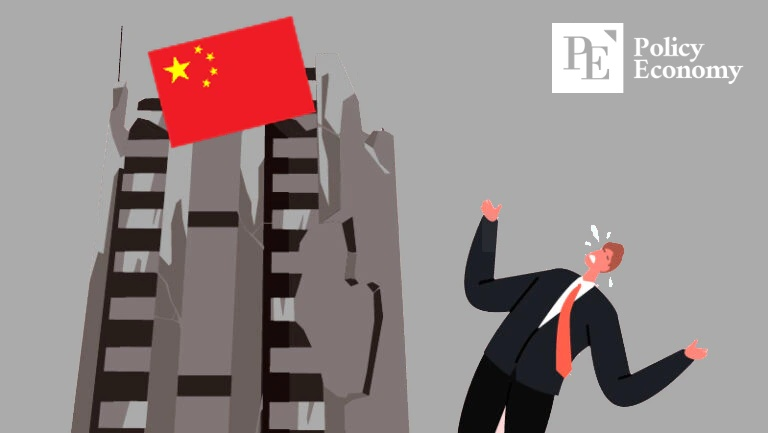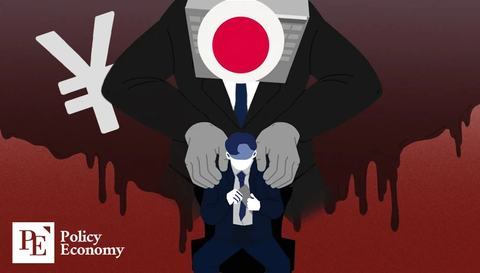Shadow of China’s Regional Economic Downturn: Wage Arrears Rise, Sparking Protests Across the Country
Input
Changed
Wage Arrear Protests Spread Across China Over 60 Incidents in 21 Regions, Including Factory Arson Expanding Across All Fronts—from Construction Sites to Schools and Hospitals

In recent months, China has been gripped by a wave of labor unrest, revealing a simmering economic crisis far deeper than numbers alone suggest. As the country’s once-booming real estate sector collapses and domestic consumption stalls, unpaid wages have emerged as a flashpoint for widespread frustration. Factories, construction sites, hospitals, and schools—once bastions of stable employment—have become grounds for protest, desperation, and in some cases, destruction. Workers from all walks of life, from blue-collar migrants to white-collar professionals, increasingly find themselves left behind in an economy under stress. And as protests spread from inland provinces to major cities, the underlying cause points to a more troubling reality: the structural weaknesses in China’s regional economies, long hidden beneath layers of local government debt and unsustainable growth models.
Desperation on Display: From Factory Fires to Sit-Ins
The unrest gained widespread attention when a 27-year-old textile worker named Yuan in Pingshan County, Sichuan Province, resorted to arson after not receiving his roughly USD 110 monthly salary. On May 20, Yuan allegedly confronted his employer in a heated dispute over unpaid wages before setting fire to the factory. The blaze lasted 37 hours, causing damage to tens of millions of yuan. He was arrested at the scene.
While Yuan’s act was extreme, public sentiment was not unsympathetic. On Chinese social media platforms, many netizens expressed sorrow rather than condemnation, calling him “800 형 (Comrade 800)” and framing his act as a tragic expression of voiceless desperation. According to online commenters, Yuan urgently needed the money to care for his ailing mother. His story struck a national nerve, leading to widespread calls for reforms to ensure that similar "800-yuan tragedies" never happen again.
Yuan’s case is not isolated. On May 19, workers at a Yangxin Expressway construction site in Hubei Province—operated by China Railway Seventh Group—posted a video demanding overdue wages. Just days earlier in Nanning, Guangxi Province, 32 construction workers began staging a sit-in outside the Guangxi Power Transmission and Transformation Construction Company, protesting wage delays that left them without pay for months.
Data compiled by Radio Free Asia (RFA) reveals a broader pattern: from April 1 to May 21, over 60 wage-related protests and strikes erupted across 21 Chinese provinces and even at Chinese-run sites in Indonesia. Tens of thousands of workers from key sectors—automotive, apparel, electronics, construction, education, and healthcare—joined the growing movement. Most reported receiving only partial payments, delayed basic wages, or the total loss of bonuses and benefits. As stories spread, so did anger and resolve.
A Crisis That Crosses Class and Industry
Traditionally, wage arrears were a plight endured by China’s rural migrant workers, who traveled to urban centers seeking better pay. But today’s wage crisis is far-reaching and includes a broader swath of the workforce—teachers, nurses, and service employees are now among the hardest hit.
In Shenzhen, a bustling tech hub in Guangdong Province, employees of a home appliance service company occupied their workplace for nine hours, demanding overdue salaries. In Zaozhuang, a city in Shandong Province, contract teachers revealed they had not received wages for six months, despite continuing to work. In Gansu Province, a nurse at a state-run hospital lamented that her monthly salary was around USD 180, and she had not received her performance bonus for four months.
These cases highlight a profound shift in the composition of China’s economic victims. Not only are construction laborers and factory workers affected, but also professionals in public service roles—those once presumed to have job security. Their discontent reveals the extent to which fiscal strain has bled into essential sectors like healthcare and education.
Moreover, many public institutions and private employers claim they are unable to meet payroll due to cash flow problems rooted in local economic downturns. Delayed payments are not merely accounting issues—they are signs of systemic failure. Workers dependent on these wages for daily survival are now pushed to the edge, triggering unrest and, in extreme cases, acts of desperation and destruction.

Debt-Driven Development Reaches a Breaking Point
Beneath the growing unrest lies a more structural and deeply rooted problem: China’s local governments, once champions of aggressive economic expansion, are now drowning in debt. The dual pressures of a prolonged real estate slump and rising geopolitical tensions have left these local entities cash-strapped, unable to sustain payrolls, fund investments, or deliver social services.
For years, local governments acted as engines of national growth, channeling vast sums into infrastructure and urban development. But this model relied heavily on borrowing through entities known as Local Government Financing Vehicles (LGFVs)—special-purpose platforms that allowed regional governments to fund projects without showing debt on official books. These "shadow debts" grew quietly and quickly, especially as many investments, such as expressways and bridges in remote provinces like Guizhou, proved to be low-return ventures.
Now, the chickens are coming home to roost. The prolonged property market crash that began in late 2021 has choked off a critical source of local revenue—land sales—while also deepening the debt burden of LGFVs. Many localities are caught in a fiscal death spiral, where mounting interest payments consume shrinking revenues, leaving little for operational costs like wages.
A retired staff member from Guizhou University in Guiyang remarked, “High local government debt combined with central government austerity measures has severely impacted regional fiscal operations. The most direct victims are frontline and contract workers.” His statement reflects a growing consensus among economists: that China's growth model, built on debt-fueled regional expansion, is unraveling.
According to the Chinese Ministry of Finance, as of September 2024, official local government debt stood at USD 6.2 trillion. However, this figure excludes the enormous off-the-books liabilities incurred through LGFVs. The International Monetary Fund (IMF) estimates that LGFV debt alone reached about USD 8.3 trillion by the end of 2023, nearly half of China’s GDP.
In response, Beijing announced a massive, approximately USD 1.4 trillion bailout plan to be disbursed over five years in hopes of stabilizing local finances. But analysts remain skeptical. Without structural reform, such bailouts may merely delay the reckoning rather than resolve it.





















